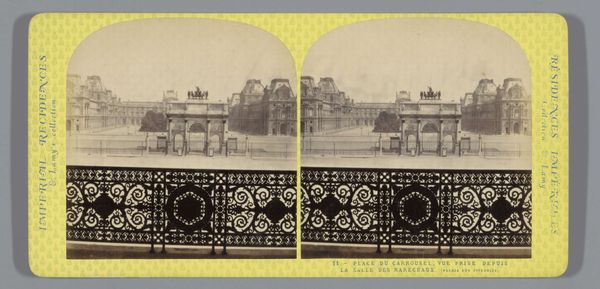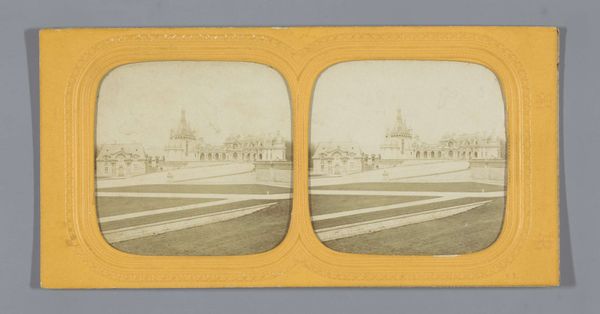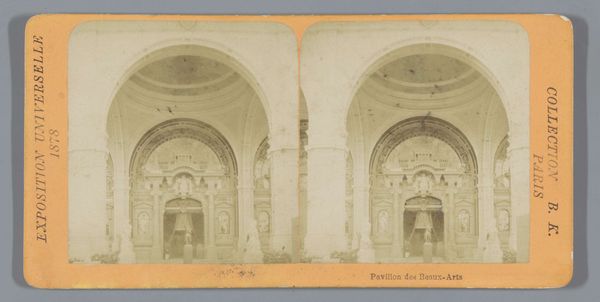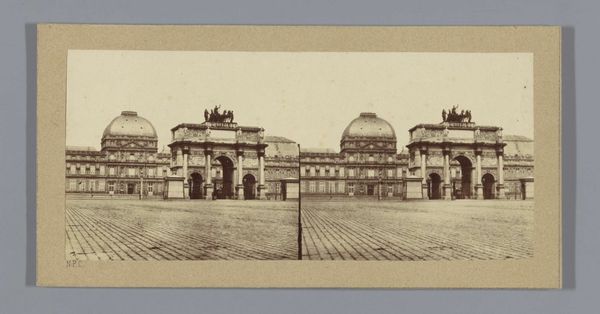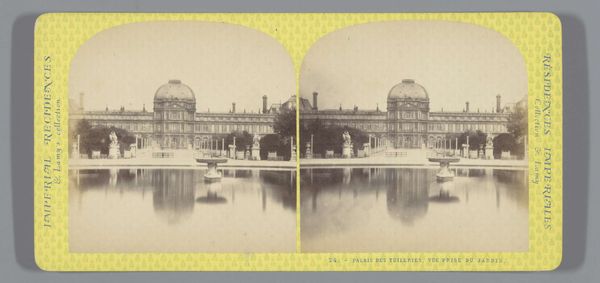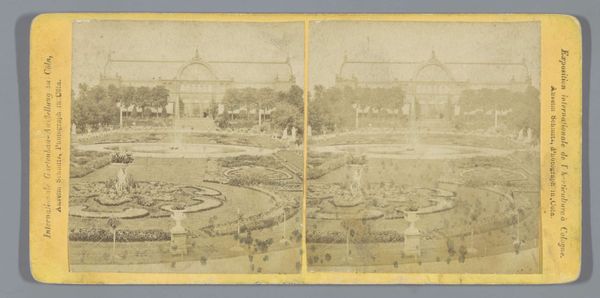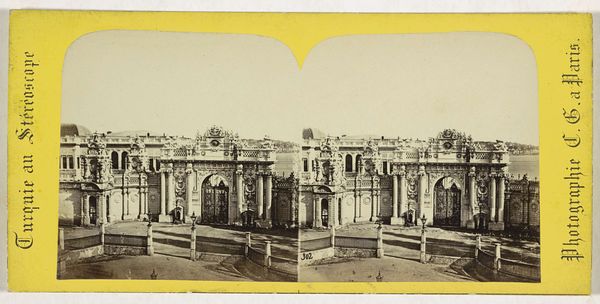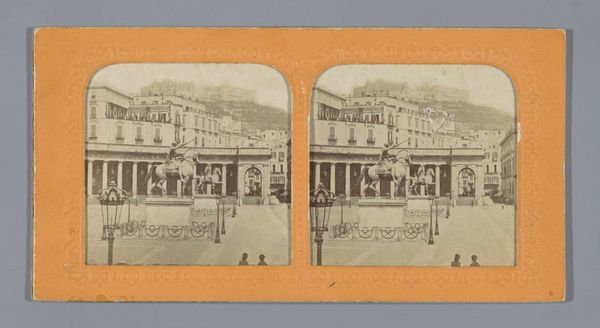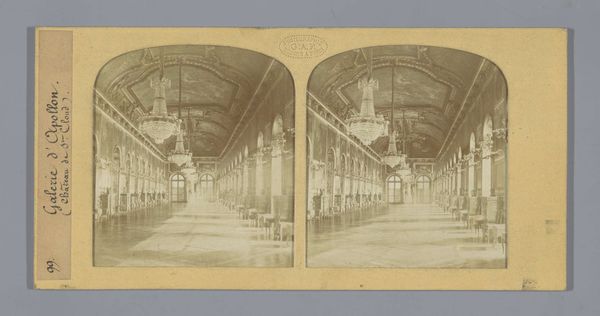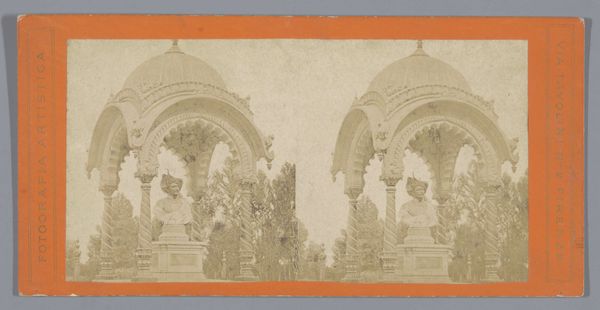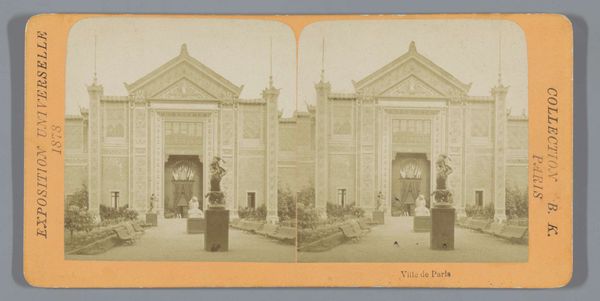
Gezicht op Place du Carroussel en Arc du Carrousel, Parijs 1860 - 1870
0:00
0:00
#
yellowing
#
aged paper
#
toned paper
#
yellowing background
#
old engraving style
#
tea stained
#
watercolour illustration
#
golden font
#
watercolor
#
historical font
Dimensions: height 73 mm, width 151 mm
Copyright: Rijks Museum: Open Domain
Editor: So, this is a stereoscopic image entitled "Gezicht op Place du Carroussel en Arc du Carrousel, Parijs" by Ernest Eléonor Pierre Lamy, dating from 1860 to 1870. It has a slightly faded, almost dreamlike quality. The image of the arch and the Louvre seems to float above the decorative railing. What’s your take on it? Curator: It’s interesting how Lamy chose to depict this particular view of Paris, at this particular moment. The Arc du Carrousel, commissioned by Napoleon to emulate Roman triumphal arches, is presented almost like a stage backdrop for the ornate railing. Notice how the artist plays with the contrast between imperial grandeur and the seemingly everyday embellishment. What might that contrast be saying about the social and political climate of the Second Empire? Editor: That's fascinating. The railing almost feels like a barrier, or maybe a filter, through which the grandeur of the Empire is being viewed. Curator: Exactly. And consider the function of this image as a stereoscopic view. These were popular mass-produced items. They offered people a "virtual" tour, a mediated experience of Parisian monuments. This format democratized access, while simultaneously controlling the perspective and framing the narrative. Were these images celebrating Napoleon's Paris, or quietly commenting on it? Editor: It's almost as if the artist is acknowledging both the power and the distance from it, by placing it behind what seems like the “everyday”. It really prompts us to question the intended purpose and reception of this work, given its historical context. Thanks, this has completely changed the way I view this piece. Curator: And seeing how the act of distributing images contributes to our modern viewpoint is a good challenge to accept when examining art in a historical setting.
Comments
No comments
Be the first to comment and join the conversation on the ultimate creative platform.
